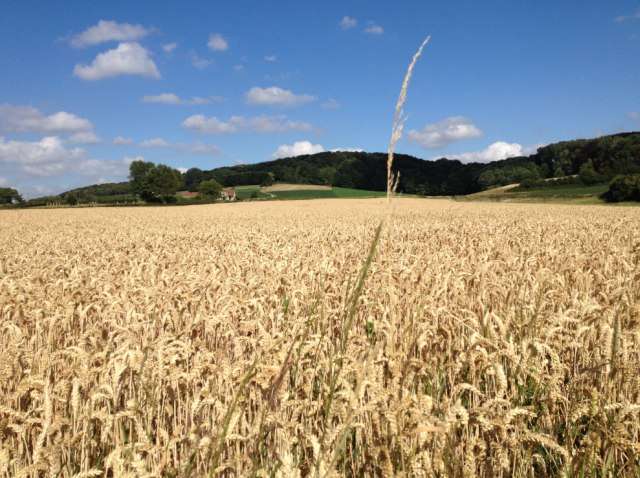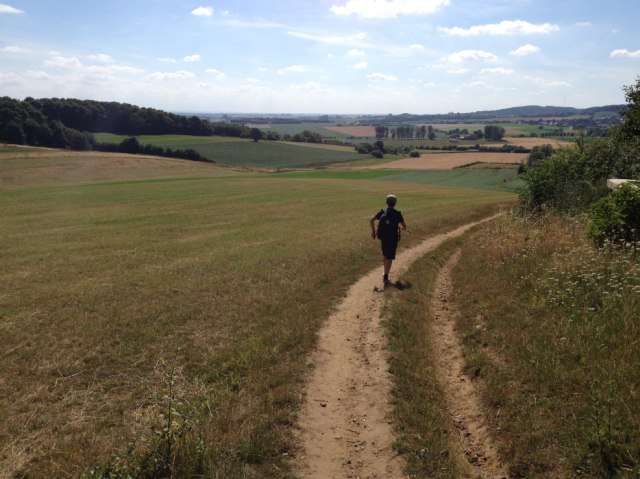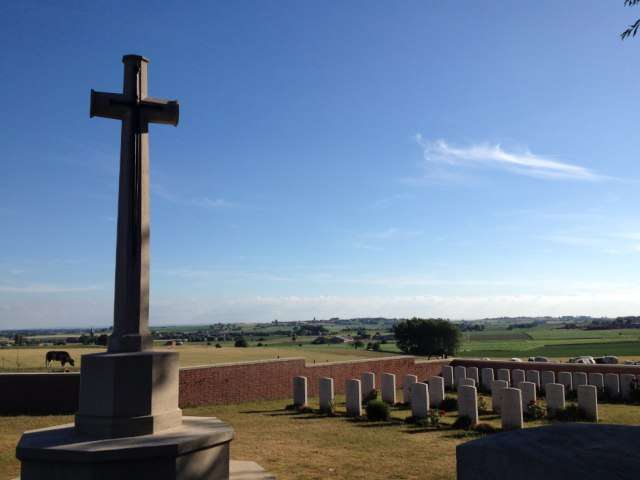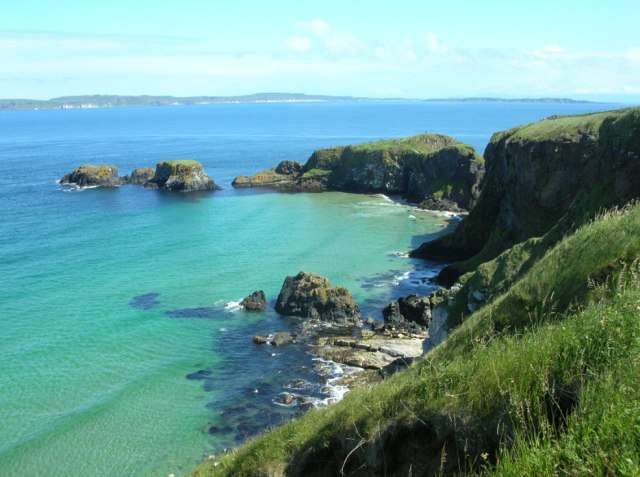The region is characterized by a number of low hills, of which the highest, the Kemmelberg, reaches a modest 156 meters.
During World War I it was a heavily contested feature.
This is what the Kemmelberg looks like today (view from the West):

This is what it looked like in 1918:

Near the summit, there's a Monument commemmorating the French soldiers who fell defending this hill:

When descending the road leading west from the monument, you come across an ossuary containing the remains of 5294 French soldiers, of which only 57 were ever identified:

I couldn't help but think of the contrast of our overjoyed boy, descending the sun-soaked western slopes, and the desperate troops who a hundred years ago clung to Kemmelberg in torrents of both water and steel.

After we came back in the village of Kemmel, to the east of the hill, I drove a couple of kilometers eastwards yet, where I knew there was huge man-made crater... one of those created when English mines ripped the Earth's innards out on June 7, 1917. Here, Canadians and British had for more than a year been digging a tunnel of 521m, at the end of which they placed 41314 kg of ammonal. The explosion on 7 June 1917 was one of 19 along the front in Flanders, meant to demolish the German frontlines. On this very spot, near the village of Wijtschate, was placed the largest of the mines, and the explosion caused a crater 27m deep with a diameter of 129m. It is said that the detonations of the 19 charges could be heard across the Channel. Not all exploded though...
... in total, 24 mines had been placed...
One, the Germans managed to defuse.
Another one blew up in 1955 following a lighting strike.
In 2017, three mines are still lurking underground, like apocalyptic beasts patiently waiting to roar their ugly heads.
This is what the crater, locally known as the Spanbroekmolenkrater, looks like today:

Anglosaxon literature will more often refer to it as the Pool of Peace, because in the century since it has been filling with water, creating a pool 12m deep and 76m across. It is a War Memorial, still the property of Talbot House (Toc H) in Poperinge, for which the site was purchased in the 1920s by Lord Wakefield.
While I knew about the crater, I knew not of Lone Tree Cemetery.
I noticed a sign pointing to it when we had walked around the 'Pool of Peace' in a clockwise manner.
It is easy to miss, since it is so small and behind a farm, the buildings of which obscure it partly. This is Lone Tree Cemetery:

It appeared that the dead buried here were mostly from the Royal Irish Rifles 36th Ulster Division.
I noticed this grave in particular, because there was a tag attached to it:

The final resting place, "In Flanders' Fields", of Cpl. Hugh Spence, 12th Battalion Royal Irish Rifles.
He fell on June 7, 1917...

... the very day that the mine buried a mere 50 meters away exploded.
Now, it is known that the mine did not explode on the scheduled time. It seems there was a lapse of 15 seconds. It also seems that the British soldiers, anticipating the explosions as they were also the starting shot for an offensive meant to capture Messines Ridge, leapt to their feet, thinking the mine had been a dud. It is said that some even advanced.
And then the mine blew up anyway.
Was Cpl. Hugh Spence a victim of the explosion? Or did he perish while fighting the Germans later on that day?
I was unable to find out what happened. A quick search got me some meagre info dealing with 36th Ulster division personnel, among them Hugh Spence:
"Rifleman Hugh Spence, 12/6848, 12th Battalion Royal Irish Rifles, Son of Hugh and Elizabeth Spence nee McCormack, Coolkenny, Ballycastle, Co Antrim. Aprox. 19 years of age, deceased is buried in Lone Tree Cemetery, France [sic]. (Image No.7)"
Ballycastle is in County Antrim, on Ulster's northern coast. I remembered we had spent a glorious day there in summer 2011, when we visited the two top attractions nearby, Giant's Causeway and the Carrick-a-rede rope bridge. This is a photo I took then of that magnificent shore:

And I remembered how proud we were of our boy, who, aged 4 at that time, crossed the rope bridge as if he was strolling in our living room. Me, it gave me the jeevers.
A simple tag with a photo and a name pounded home how precious and yet how volatile a human life is. While life isn't easy for the grand majority of us, basically most of us today enjoy priviliges unknown to previous generations. On a fateful day somewhere in the middle of World War One a young man by the name of Hugh Spence was called upon to do his duty - liberate Western Europe from the German invaders. It does not matter whether the mine killed him or the Kaiser's troops - he died liberating my country.
And because of his sacrifice, and the sacrifice of his comrades, a century later our family was able to visit his country - in far more enjoyable circumstances.
I am grateful.
Cpl. Hugh Spence, of the 12th Battalion, Royal Irish Rifles, 36th Ulster Division... thank you. RIP. God Bless.
MFBB.